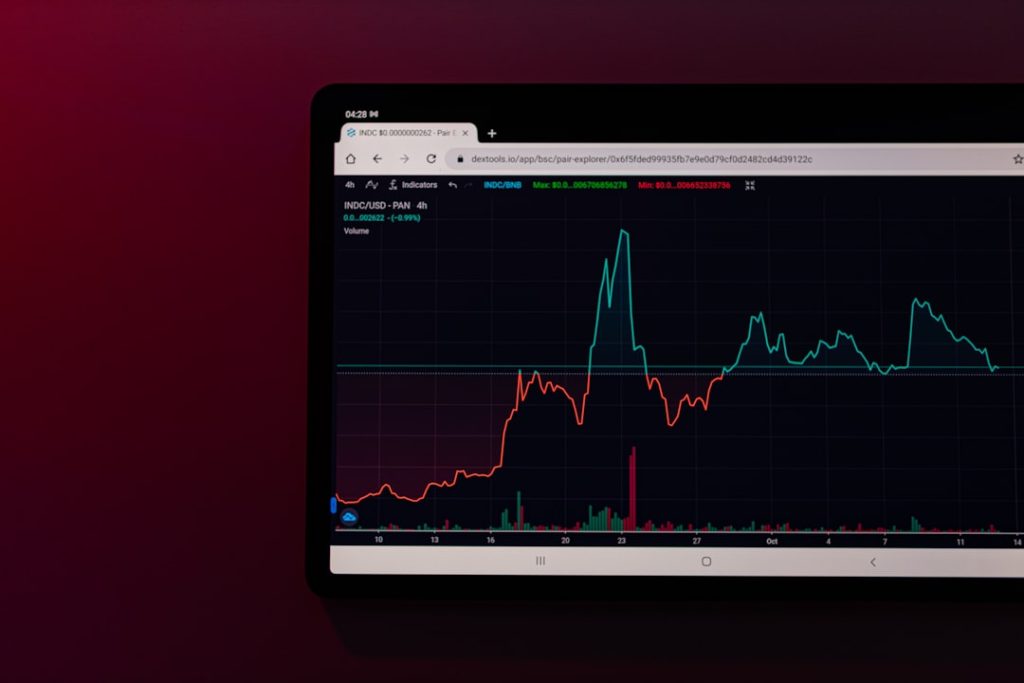Telemetry, a term derived from the Greek words “tele,” meaning remote, and “metron,” meaning measure, plays a pivotal role in the aerospace and defense sectors. It refers to the automated process of collecting and transmitting data from remote sources to receiving systems for monitoring and analysis. In the context of aerospace and defense, telemetry is crucial for a variety of applications, including aircraft performance monitoring, missile guidance systems, and satellite operations.
The ability to gather real-time data from various platforms allows engineers and operators to make informed decisions, enhance safety protocols, and improve overall operational efficiency. The significance of telemetry in these industries cannot be overstated. It serves as the backbone for data-driven decision-making processes, enabling organizations to optimize their systems and respond swiftly to any anomalies.
For instance, telemetry systems are integral during flight tests, where they provide critical information about an aircraft’s performance metrics such as altitude, speed, and engine status. This data is essential not only for ensuring the safety of the flight but also for refining designs and improving future models. As technology continues to evolve, the sophistication of telemetry systems has increased, incorporating advanced sensors, data analytics, and communication technologies that enhance their capabilities.
Key Takeaways
- Aerospace and defense telemetry involves the collection and transmission of data from aircraft, spacecraft, and defense systems for monitoring and analysis.
- Current trends in the aerospace and defense telemetry market include the use of advanced sensors, real-time data analysis, and the integration of telemetry with artificial intelligence and machine learning.
- Key players in the aerospace and defense telemetry industry include companies like Honeywell International, L3Harris Technologies, and BAE Systems, who are constantly innovating to stay ahead in the market.
- Telemetry is used in aerospace and defense for applications such as flight testing, remote monitoring of unmanned aerial vehicles, and tracking and control of missiles and satellites.
- The aerospace and defense telemetry market faces challenges related to cybersecurity, data privacy, and the need for standardization, but also presents opportunities for growth through advancements in technology and increasing defense budgets.
Current Trends and Developments in the Aerospace and Defense Telemetry Market
The aerospace and defense telemetry market is currently experiencing significant growth driven by advancements in technology and increasing demand for real-time data analytics. One notable trend is the integration of Internet of Things (IoT) technologies into telemetry systems. IoT-enabled devices facilitate seamless communication between various components of aerospace systems, allowing for more comprehensive data collection and analysis.
This integration not only enhances the accuracy of telemetry data but also enables predictive maintenance strategies that can significantly reduce operational costs. Another trend shaping the market is the shift towards miniaturization and lightweight materials in telemetry equipment. As aerospace platforms become more compact and efficient, there is a growing need for telemetry systems that can operate effectively within these constraints.
Manufacturers are responding by developing smaller, more efficient sensors that can deliver high-quality data without adding significant weight to the aircraft or spacecraft. This trend is particularly relevant in the context of unmanned aerial vehicles (UAVs) and satellites, where weight reduction is critical for performance and fuel efficiency.
Key Players and Competitors in the Aerospace and Defense Telemetry Industry

The aerospace and defense telemetry industry is characterized by a diverse array of key players, each contributing unique technologies and solutions to the market. Major corporations such as Northrop Grumman, Lockheed Martin, and Boeing dominate the landscape, leveraging their extensive experience in aerospace engineering and defense systems to develop advanced telemetry solutions. These companies invest heavily in research and development to stay ahead of technological advancements and meet the evolving needs of their clients.
In addition to these industry giants, several smaller companies and startups are emerging as significant competitors in the telemetry space. Firms like Teledyne Technologies and L3Harris Technologies are making strides with innovative telemetry solutions that cater to niche markets within aerospace and defense. These companies often focus on specific applications or technologies, such as satellite telemetry or ground-based telemetry systems, allowing them to carve out a competitive edge in a crowded marketplace.
The dynamic nature of this industry fosters an environment where collaboration and partnerships are common, as companies seek to combine their strengths to deliver comprehensive telemetry solutions.
Applications and Uses of Telemetry in Aerospace and Defense
| Application | Use |
|---|---|
| Flight Testing | Collecting data on aircraft performance and behavior |
| Remote Sensing | Monitoring environmental conditions from a distance |
| Health Monitoring | Tracking the condition of aircraft components and systems |
| Space Exploration | Transmitting data from spacecraft to Earth |
| Military Surveillance | Gathering intelligence and monitoring enemy activities |
Telemetry finds extensive applications across various domains within aerospace and defense, each serving critical functions that enhance operational capabilities. In aviation, telemetry is essential for monitoring aircraft systems during flight tests. Engineers utilize telemetry data to assess performance metrics such as fuel efficiency, engine health, and aerodynamic characteristics.
This information is invaluable for identifying potential issues before they escalate into serious problems, thereby ensuring the safety of both crew and passengers. In military applications, telemetry plays a crucial role in missile guidance systems. By transmitting real-time data regarding trajectory, speed, and environmental conditions back to command centers, telemetry enables precise targeting and enhances mission success rates.
Additionally, telemetry is employed in unmanned aerial vehicles (UAVs) for surveillance missions. These drones rely on telemetry data to navigate complex environments while gathering intelligence on enemy positions or monitoring natural disasters. The versatility of telemetry applications underscores its importance in both commercial aviation and military operations.
Challenges and Opportunities in the Aerospace and Defense Telemetry Market
Despite its many advantages, the aerospace and defense telemetry market faces several challenges that could hinder its growth potential. One significant issue is the increasing complexity of data management. As telemetry systems generate vast amounts of data from multiple sources, organizations must develop robust data processing capabilities to analyze this information effectively.
The challenge lies not only in managing the volume of data but also in ensuring its accuracy and security against cyber threats. Conversely, these challenges also present opportunities for innovation within the industry. Companies that can develop advanced data analytics tools or artificial intelligence algorithms capable of processing large datasets will be well-positioned to capitalize on this growing market demand.
Furthermore, as regulatory bodies emphasize safety and compliance standards, there is an opportunity for telemetry providers to offer solutions that enhance compliance monitoring capabilities. By addressing these challenges head-on, companies can create value-added services that differentiate them from competitors.
Regulatory and Compliance Issues in Aerospace and Defense Telemetry

The aerospace and defense sectors are subject to stringent regulatory frameworks designed to ensure safety, security, and reliability. Telemetry systems must comply with various standards set forth by organizations such as the Federal Aviation Administration (FAA) in the United States or the European Union Aviation Safety Agency (EASA). These regulations dictate how telemetry data should be collected, transmitted, and stored to ensure it meets safety requirements during flight operations.
Moreover, compliance with cybersecurity regulations has become increasingly critical as telemetry systems become more interconnected through IoT technologies. The potential for cyberattacks on telemetry data poses significant risks to national security and operational integrity. As a result, organizations must implement robust cybersecurity measures to protect sensitive information from unauthorized access or manipulation.
This regulatory landscape creates both challenges and opportunities for companies operating in the telemetry space as they strive to meet compliance requirements while innovating their product offerings.
Future Outlook and Growth Prospects for the Aerospace and Defense Telemetry Market
Looking ahead, the future of the aerospace and defense telemetry market appears promising due to several factors driving growth. The increasing reliance on data-driven decision-making across industries is expected to fuel demand for advanced telemetry solutions that provide real-time insights into system performance. As organizations continue to prioritize safety and efficiency, investments in telemetry technology will likely increase.
Additionally, advancements in satellite technology are poised to expand the scope of telemetry applications beyond traditional boundaries. The proliferation of small satellites—often referred to as CubeSats—has opened new avenues for telemetry use in space exploration and Earth observation missions. These developments will not only enhance existing capabilities but also create new markets for telemetry solutions tailored to emerging technologies such as space tourism or asteroid mining.
The Impact of Telemetry on the Aerospace and Defense Industry
Telemetry has become an indispensable component of modern aerospace and defense operations, providing critical insights that drive safety, efficiency, and innovation. As technology continues to evolve, so too will the capabilities of telemetry systems, enabling organizations to harness vast amounts of data for improved decision-making processes. The ongoing trends toward miniaturization, IoT integration, and advanced analytics will further enhance the role of telemetry in shaping the future of these industries.
The challenges posed by regulatory compliance and data management will require ongoing attention from industry stakeholders; however, these challenges also present opportunities for growth through innovation. As key players continue to invest in research and development while navigating this complex landscape, the impact of telemetry on aerospace and defense will undoubtedly expand, paving the way for safer skies and more secure operations on land and sea alike.


